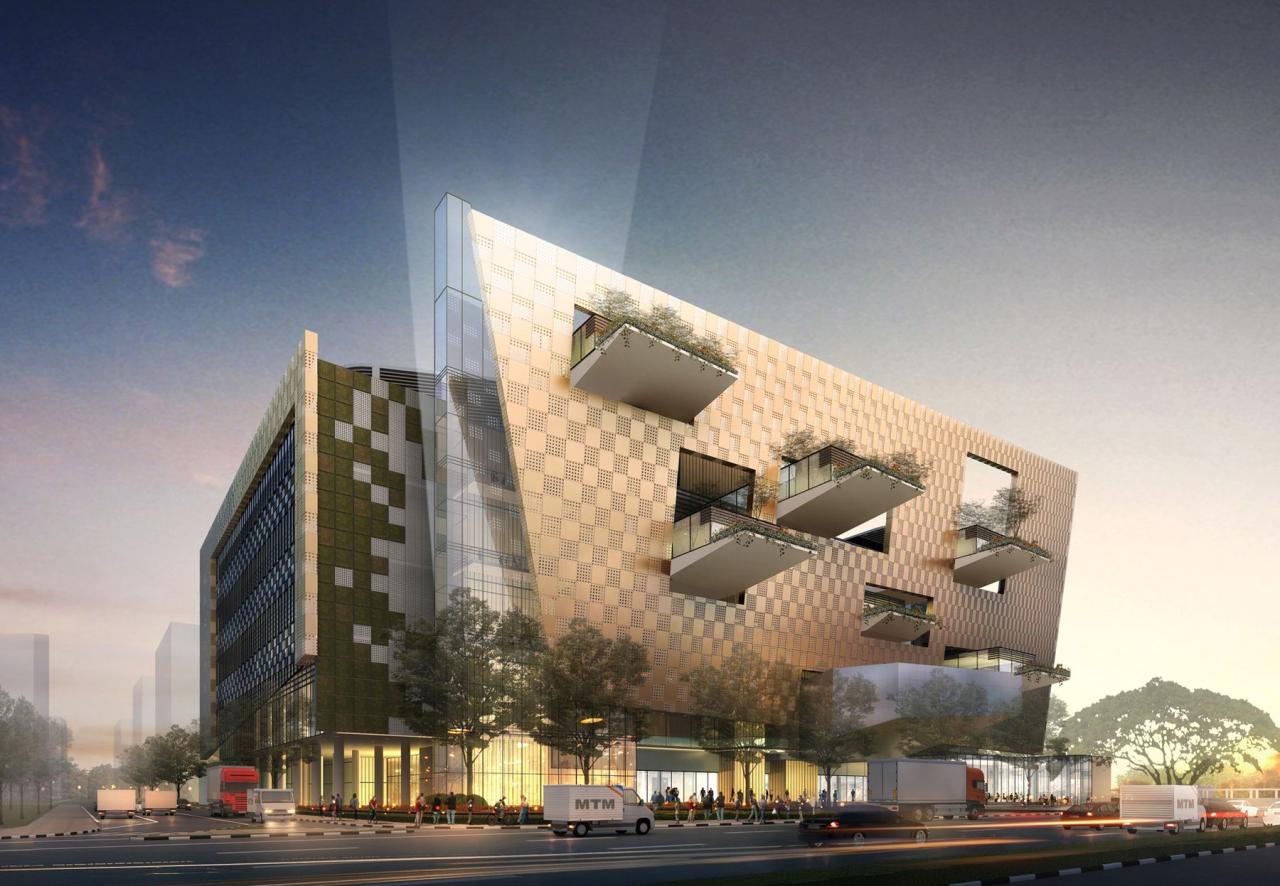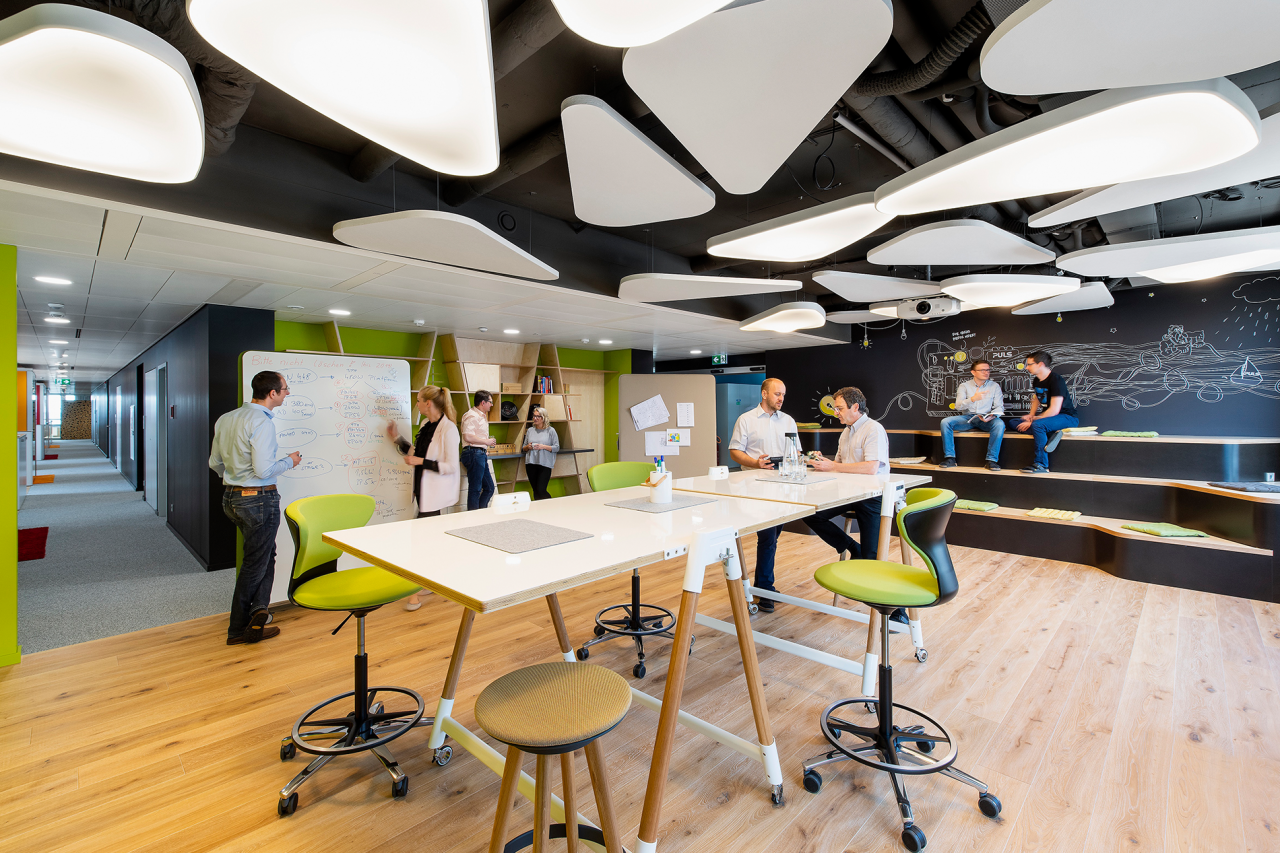Digital architecture represents a dynamic shift in the world of building design and construction. It embodies the integration of advanced technologies, data-driven strategies, and innovative digital tools to streamline processes, improve accuracy, and push the boundaries of creative expression. Unlike traditional architectural methods that rely heavily on manual drafting, physical models, and on-site adjustments, digital architecture leverages computer-aided design (CAD), Building Information Modeling (BIM), parametric modeling, virtual reality (VR), augmented reality (AR), and other state-of-the-art solutions. The result is a transformative approach that influences every stage of the architectural lifecycle, from conceptualization and visualization to construction and long-term facility management.
In an era where efficiency, adaptability, and sustainability are paramount, digital architecture stands at the forefront of how our built environment will evolve. This article explores the fundamental aspects of digital architecture, its underlying technologies, the workflow modifications it introduces, and its long-term implications for the construction industry. We will delve into the key concepts, tools, and processes shaping this new landscape, while also examining the potential challenges and anticipating future trends. Ultimately, digital architecture is more than just a technological upgrade—it represents a paradigm shift that empowers architects, engineers, contractors, and stakeholders to create safer, smarter, and more sustainable built environments.
Digital architecture is not merely about using computers in design. It involves a holistic approach where data, algorithms, and digital tools become integral parts of the design and construction process. The notion of digital architecture encompasses:
A. Parametric and Algorithmic Design:
Architects now rely on parameters and algorithms to shape spaces. By adjusting variables such as dimensions, material properties, lighting conditions, and structural parameters, the design can morph, evolve, and optimize in real-time.
B. Building Information Modeling (BIM):
BIM is more than a 3D model—it’s a collaborative platform that integrates data about every component of a building. From design and material selection to lifecycle management, BIM serves as a single source of truth, ensuring all stakeholders have up-to-date, accurate information.
C. Digital Fabrication and Prefabrication:
With advanced digital modeling, components can be fabricated off-site with precision. Prefabricated elements, guided by digital blueprints, speed up the construction timeline, reduce material waste, and improve quality control.
D. Virtual and Augmented Reality in Architecture:
VR and AR technologies allow stakeholders to experience a space before it’s built. Virtual walkthroughs, immersive presentations, and AR overlays on construction sites facilitate better decision-making and reduce costly errors.
Key Technologies and Tools in Digital Architecture
The success of digital architecture hinges on a spectrum of powerful tools and emerging technologies that streamline design, planning, and execution. Some of the most influential include:
A. Computer-Aided Design (CAD) Software
CAD revolutionized architectural drafting decades ago, replacing physical drawings with digital models. Today’s CAD tools feature intuitive interfaces and robust libraries of components, making it easier than ever to design and modify building elements. CAD software also integrates seamlessly with other advanced technologies like BIM and VR, forming the foundation of a comprehensive digital workflow.
B. Building Information Modeling (BIM) Platforms
BIM platforms unite all project data—architectural, structural, mechanical, electrical, and plumbing—into a singular, interactive model. This holistic approach reduces information silos and supports more coordinated communication. BIM files can detail every component from windows and doors to HVAC systems and electrical wiring, ensuring that all stakeholders, including architects, engineers, contractors, and facility managers, work from the same dataset.
C. Parametric Modeling Tools
Parametric modeling harnesses algorithms to create flexible design systems. Instead of manually adjusting geometry, architects set rules and parameters. By manipulating these rules, they generate multiple iterations, explore unique design solutions, and optimize structures for factors like energy consumption, occupant comfort, and material efficiency.
D. Generative Design Software
Generative design takes parametric modeling a step further by employing AI-driven algorithms. Designers input goals and constraints—structural stability, spatial requirements, sustainability targets—and the software generates numerous design possibilities. This automated exploration allows architects to discover innovative forms and solutions that might otherwise remain hidden.
E. Virtual Reality (VR) and Augmented Reality (AR) Tools
With VR and AR, architects can simulate walking through a building before it exists. Clients and stakeholders can experience spaces in a highly immersive environment, gaining a better understanding of scale, proportion, and material finishes. AR can be used on-site to overlay digital models onto real-world conditions, guiding construction teams and reducing errors.
F. 3D Printing and Robotic Construction Equipment
Digital architecture is not confined to the design studio. On the construction site, 3D printers and robotic equipment can read digital instructions to fabricate building components on-demand. This approach minimizes waste, enhances precision, and can shorten construction schedules.

The Benefits of Embracing Digital Architecture
Adopting a digital approach to design and construction yields advantages that are too significant to ignore. These benefits encompass productivity, collaboration, sustainability, and cost-effectiveness:
A. Enhanced Collaboration and Communication:
Digital architecture centralizes information. By hosting all project data in a single accessible model, communication between architects, engineers, contractors, and clients becomes more transparent and efficient. Miscommunications decrease, revisions are tracked in real-time, and informed decisions are made faster.
B. Cost Reduction and Efficiency Gains:
With improved accuracy in design and construction documents, the likelihood of expensive rework, material overruns, and project delays decreases. In addition, advanced prefabrication methods guided by precise digital instructions accelerate construction timelines, saving labor and material costs.
C. Improved Design Quality and Innovation:
Digital architecture opens the door to experimentation with complex geometries and non-traditional forms. Parametric and generative design approaches let architects push boundaries, producing innovative structures that stand out while still meeting rigorous performance criteria.
D. Sustainability and Energy Efficiency:
Integrated data within BIM models allows for simulations that predict energy usage, daylight penetration, thermal performance, and more. These insights enable architects to create buildings that minimize environmental impact, adhere to green building standards, and promote occupant well-being.
E. Risk Management and Safety:
Virtual simulations help identify potential safety hazards early, allowing for mitigation strategies before ground is broken. Construction teams can also use AR devices to see hidden systems behind walls, decreasing the risk of costly damage and on-site accidents.
The Digital Workflow: From Concept to Construction
Digital architecture requires a systematic workflow that aligns with each project’s objectives and stakeholders. This digital workflow often unfolds through key stages:
A. Conceptualization and Early Design
- Architects start by defining project goals, constraints, and desired outcomes.
- Conceptual sketches might evolve into CAD models, and parametric frameworks are established.
- Generative design tools can be leveraged to produce multiple design options rapidly, ensuring a broad exploration of possibilities.
B. Detailed Design Development
- The chosen concept is refined and integrated into a BIM platform.
- Structural, mechanical, and electrical components are incorporated.
- Parametric rules guide iterative improvements, ensuring that the design remains flexible and responsive to changes.
C. Simulation and Analysis
- Energy analysis, daylight modeling, and structural simulations run within the BIM environment.
- Adjustments to the design ensure compliance with performance and sustainability targets.
- Feedback loops enable prompt refinements, enhancing design quality before construction begins.
D. Construction Documentation and Prefabrication
- BIM data is used to produce precise construction documents, including detailed shop drawings and installation guides.
- Off-site fabrication units receive digital files that guide robotic equipment and 3D printers.
- Prefabricated components arrive on-site ready for assembly, reducing the need for on-site adjustments.
E. On-Site Assembly and Quality Control
- AR technologies overlay BIM data onto the physical site, guiding workers and ensuring correct installation of each component.
- Construction teams use tablets and headsets to reference the latest data, avoiding reliance on outdated paper plans.
- Real-time data capture (via drones, sensors, and IoT devices) feeds back into the BIM model, updating as-built conditions and ensuring continuous quality control.
F. Facility Management and Lifecycle Considerations
- Once construction is complete, the BIM model serves as a digital twin, providing valuable insights for facility managers.
- Maintenance schedules, energy usage reports, and occupancy data integrate into the model.
- The building’s entire lifecycle—from design to demolition—is guided by a comprehensive digital record.
Overcoming Challenges in Digital Architecture
While the advantages are clear, the journey toward fully integrated digital architecture is not without hurdles:
A. Investment in Training and Skills Development:
Teams must adapt to new workflows, software interfaces, and collaborative approaches. Ongoing education, certifications, and hands-on workshops are critical. Firms that invest in continuous skill development ultimately gain a competitive edge.
B. Initial Costs for Technology Adoption:
While digital tools pay dividends in the long run, initial implementation costs—software licenses, hardware upgrades, and training—can be substantial. Careful budgeting and long-term planning help justify the investment.
C. Data Management and Cybersecurity Concerns:
As building data becomes digitized, securing it against breaches, corruption, and unauthorized access is paramount. Implementing robust cybersecurity measures, regular backups, and strict access controls ensures project information remains safe.
D. Resistance to Change:
Some professionals may be comfortable with traditional methods. Overcoming resistance requires clear communication about the benefits, leadership support, and a phased approach that lets teams gradually embrace new workflows.
E. Ensuring Interoperability Among Software Platforms:
Different stakeholders may use varied software solutions. Ensuring smooth data exchange and interoperability requires standardization, file format agreements, and industry-wide compliance with open standards like IFC (Industry Foundation Classes).
H2: The Role of Digital Twins in Modern Construction
Digital twins are among the most powerful concepts emerging from digital architecture. A digital twin is a virtual replica of a physical asset—in this case, a building or infrastructure project—rich with data and continuously updated to reflect real-world conditions.
A. Real-Time Monitoring and Predictive Maintenance:
Digital twins integrate data from sensors installed throughout a building. This data might include temperature, humidity, vibration, or energy consumption. The digital twin can predict when maintenance is needed, reducing downtime and costs.
B. Performance Optimization:
By analyzing live data, building managers can identify underperforming systems, spaces with poor air quality, or areas that consume excess energy. Adjustments can be made swiftly to improve efficiency and occupant comfort.
C. Scenario Testing and Future Planning:
Digital twins enable virtual experimentation. Facility managers can test scenarios like adding solar panels, upgrading insulation, or increasing occupancy density. This predictive power helps guide informed decisions, ensuring that changes produce the best possible outcomes.
Sustainability and Green Building Initiatives
Digital architecture aligns with global priorities to reduce environmental impact and promote responsible resource use. Sustainable design and construction practices benefit significantly from a digital approach:
A. Material Tracking and Waste Reduction:
BIM models store detailed information about materials, their quantities, and properties. This data-driven insight reduces material waste by allowing precise ordering and efficient fabrication. Minimizing off-cuts and ensuring just-in-time delivery lead to cost savings and eco-friendly practices.
B. Energy Modeling and Efficiency:
Advanced simulations help architects optimize building orientation, glazing ratios, and insulation levels. By testing designs against climate data, architects can lower energy consumption while maintaining indoor comfort.
C. Compliance with Green Certification Programs:
Digital tools streamline documentation for programs like LEED, BREEAM, or WELL Building Standard. The ease of verifying energy performance, material sourcing, and indoor environmental quality simplifies the certification process.
D. Lifecycle Considerations and Circular Economy:
Sustainable design extends beyond a building’s initial construction. Digital models consider the entire lifecycle, including eventual decommissioning and materials recycling. This holistic viewpoint supports the circular economy principles, reducing the environmental footprint over time.

Integrating AI and Machine Learning in Architecture
Artificial intelligence (AI) and machine learning (ML) are becoming integral to digital architecture, unlocking powerful predictive capabilities and automating labor-intensive tasks:
A. Automated Code Compliance Checks:
Instead of manually reviewing building codes and regulations, ML algorithms scan designs to ensure compliance. This accelerates the approval process and mitigates the risk of costly corrections.
B. Predictive Analytics for Cost and Schedule Management:
By analyzing data from past projects, AI tools predict construction timelines, material costs, and labor requirements. This foresight allows for better resource allocation, contingency planning, and budget management.
C. Generative Design with AI:
AI-driven generative design tools produce thousands of design iterations, learning from each cycle. Over time, the system refines its outputs to meet the optimal balance of aesthetics, function, and sustainability.
D. Enhanced Decision-Making and Client Engagement:
Machine learning can interpret user preferences and past design successes, guiding architects toward solutions that resonate best with clients. By presenting data-driven design options, architects can foster more informed client engagement and satisfaction.
Shaping the Future: Trends in Digital Architecture
As digital architecture continues to evolve, several trends signal where the industry is headed:
A. Increased Adoption of Cloud-Based Collaboration:
Hosting BIM models, CAD files, and project data in the cloud allows for instantaneous updates, remote teamwork, and global collaboration. This flexibility supports a decentralized workforce and ensures continuity, even if team members are spread across different continents.
B. Integration of IoT (Internet of Things) Devices:
Buildings are becoming “smart” environments enriched with sensors and connected devices. IoT integrations enhance occupant comfort, safety, and building operations, with all information feeding back into the digital model.
C. Modular Construction and Off-Site Fabrication:
Digital models streamline the production of modular building components. These modules arrive on-site ready to be assembled, cutting down on construction times and labor costs. As the market gravitates toward efficiency and speed, modular solutions are poised for growth.
D. Enhanced Visualization and Client Involvement:
VR and AR technologies will only get more sophisticated. Clients can experience a building’s interior finishes, lighting conditions, and furniture arrangements in hyper-realistic simulations, leading to more confident approvals and fewer last-minute changes.
E. Emphasis on Adaptable and Flexible Spaces:
The buildings of tomorrow must respond to changing occupant needs. Digital tools allow for designs that can be easily reconfigured, whether converting office spaces into co-working hubs or adapting residential buildings to future lifestyle trends.
Education and Skill Sets for the Digital Age
As architecture transforms, so do the skills required to thrive in this digital environment:
A. Interdisciplinary Knowledge:
Architects must understand not only design principles but also data analysis, programming basics, and digital fabrication methods. Interdisciplinary skills empower them to collaborate effectively with engineers, data scientists, and technology specialists.
B. Continuous Professional Development:
The pace of technological advancement demands ongoing learning. Architects who stay abreast of the latest software tools, AI trends, and regulatory changes can leverage opportunities to innovate and lead.
C. Soft Skills for Collaboration:
Communication, adaptability, and problem-solving remain vital. Even as technology streamlines processes, human judgment and creativity are irreplaceable. Effective communication ensures that the entire project team, from clients to subcontractors, remains aligned.
D. Embracing Change and Experimentation:
Digital architecture thrives on experimentation. Architects who embrace trial-and-error, prototype solutions, and iteratively refine their designs can stay ahead of the curve and consistently deliver exceptional results.
Practical Steps for Firms Transitioning to Digital Architecture
Shifting from traditional to digital workflows can feel daunting. Firms can take practical steps to ease this transition:
A. Pilot Projects:
Start small by applying digital methods to select projects. This approach allows teams to gain confidence, troubleshoot issues, and gradually build expertise before scaling to larger endeavors.
B. Invest in Training and Mentorship:
Offer in-house workshops, sponsor employees for certifications, or bring in external consultants. Mentorship programs help junior staff learn from experienced professionals who have already navigated the digital landscape.
C. Implement Robust Data Management Protocols:
Develop standardized naming conventions, file structures, and versioning systems. Ensuring that data is organized and accessible streamlines collaboration and prevents miscommunication.
D. Engage Stakeholders Early:
Involve clients, contractors, and engineers in the digital transition process. Early engagement fosters trust, clarifies expectations, and helps identify potential issues before they escalate.
E. Leverage Industry Standards and Best Practices:
Stay informed about industry standards for BIM, parametric modeling, and data exchange formats. Adopting widely recognized best practices ensures smoother integration and fewer compatibility issues.
The Long-Term Impact of Digital Architecture on the Industry
The widespread adoption of digital architecture heralds long-term transformations in how we conceive, build, and operate buildings:
A. Higher Productivity and Reduced Waste:
By eliminating redundancies, automating tedious processes, and optimizing construction sequences, digital architecture boosts productivity. The industry can deliver projects faster, more efficiently, and with less environmental impact.
B. Enhanced Client Satisfaction and Transparency:
Clients gain greater visibility into project progress, cost projections, and design options. This transparency builds trust, fosters stronger relationships, and encourages repeat business.
C. Global Collaboration and Market Expansion:
Digital tools transcend geographical boundaries. Firms can collaborate with international partners, access global markets, and tap into a broader pool of talent and resources. This connectivity drives innovation and competitiveness.
D. Stronger Emphasis on Sustainable Development:
As climate concerns intensify, digitally driven sustainable strategies become increasingly relevant. Buildings optimized for energy efficiency, reduced emissions, and occupant wellness contribute to a more sustainable future.
E. Architectural Creativity and Diversity in Design:
Freed from the limitations of manual drafting, architects can explore ambitious forms, complex geometries, and culturally sensitive designs. Digital tools democratize experimentation, allowing a wider range of architectural expressions to flourish.
Conclusion
Digital architecture is more than just a technological upgrade—it represents a profound cultural shift in the design and construction industry. By combining advanced tools such as BIM, parametric modeling, VR, AR, and AI-driven generative design, architects and stakeholders can collaborate seamlessly, reduce costs, improve quality, and deliver buildings that better serve their occupants and the environment.
As we look to the future, digital architecture’s influence will only grow. Buildings will become smarter, more responsive, and more sustainable. The design process will become increasingly data-driven and client-focused, with architects evolving their skill sets to navigate complex digital ecosystems. While challenges persist—such as training, initial investment, and cybersecurity—these are surmountable with careful planning, education, and strategic partnerships.
In embracing digital architecture, we stand on the brink of an era defined by efficiency, innovation, and a commitment to shaping built environments that enhance people’s lives. By understanding its principles, harnessing its technologies, and continuously refining our approaches, we pave the way for a future where architecture seamlessly integrates creativity, technology, and sustainability.









